Erin Fletcher : Fine Binding & Edition Binding
Teaching a Workshop
Workshops have been an important part of Herringbone Bindery since I began teaching in 2012. I offer instruction for all of the workshops listed below as either in-person or online.
If you're interested in another binding topic or technique that is not listed, please contact me with your inquiry and we can discuss the possibilities.
If you are looking to sign-up for an in-person or online workshop, please visit the Workshops page for more information.
Bookbinding
Cross Structure Bindings
In-person: 1 or 2-day workshop // Online: 2 or 4 sessions (2.5 hours each)The Cross Structure binding is a non-adhesive binding that offers much freedom to the text block. The variations taught in this workshop were designed by Carmencho Arregui, who found inspiration in the Long Stitch bindings of the medieval era. These structures are suitable for conservation or new bindings. The structure is uniquely constructed by interlocking either one or two pieces of material at the spine to make the covers.
This workshop is offered as a 1 or 2-day class (or 2-4 online sessions). Students will create 2 variations of the Cross Structure in the 1-day workshop (2 online sessions) and 4 variations in the 2-day workshop (4 online sessions). Students will work in both handmade paper and leather to create their models. If time permits, students will have an opportunity to decorate their covers.
Dos Rapporté
In-person: 1-day workshop // Online: 2 sessions (2.5 hours each)Dos Rapporté is an elegant binding created by Ben Elbel around 2005. Rapporté loosely translates from French as something that comes back together. To create this unique structure, the covers and spine are covered separately and brought together to finalize the binding. This binding is an elegant solution for a book that can open flat based on the unique folding technique for the spine piece.
This workshop is offered as a 1 day class (or 2 online sessions). Students will create 1 model of the Dos Rapporté structure. Students will learn the fundamentals of constructing the binding using bookcloth and decorative paper for the covers.
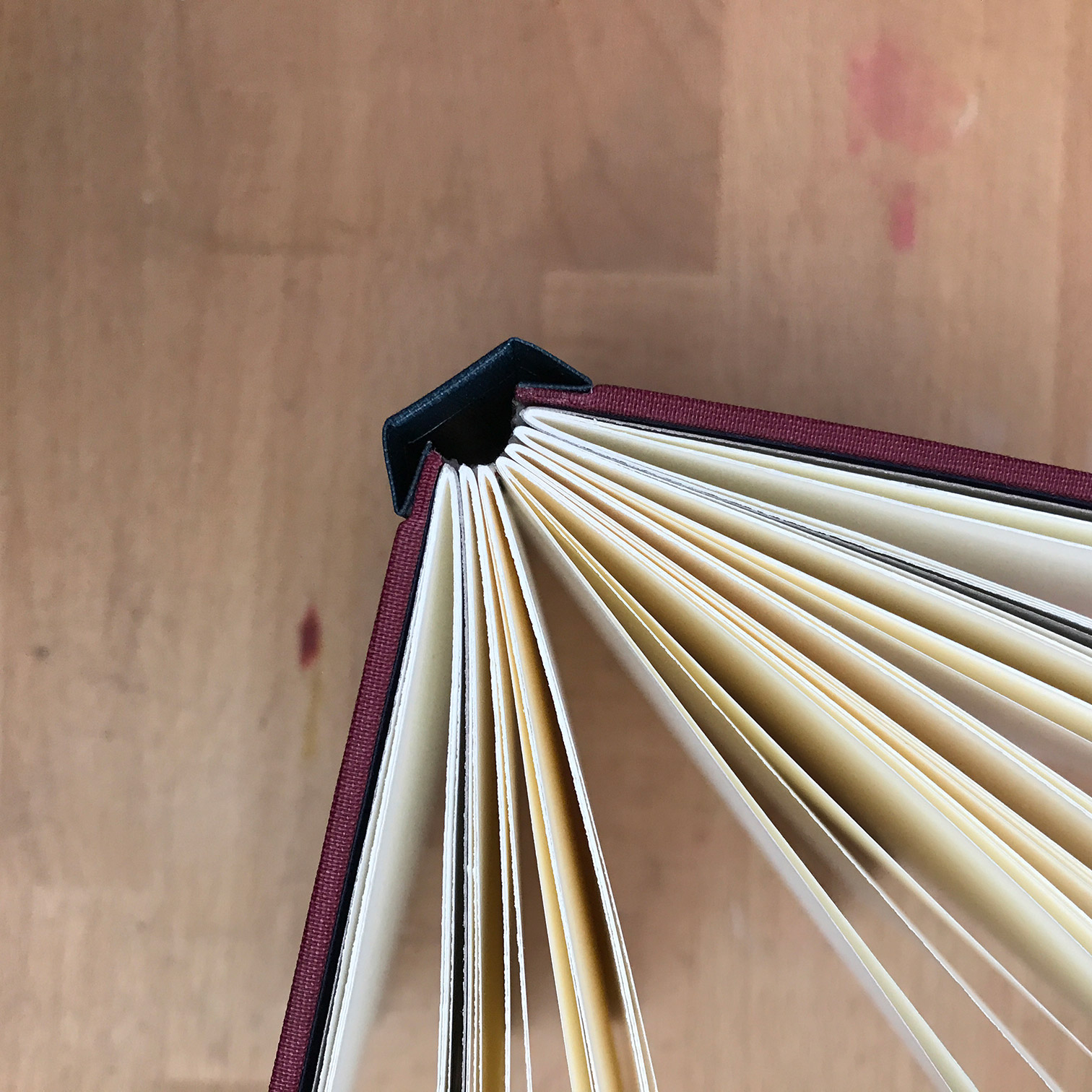
Flatback Case Binding
In-person: 1-day workshop // Online: 2 sessions (2.5 hours each)The Flatback Case Binding is one of the most common and recognizable structures today. In this workshop, students will learn foundational binding skills to assemble two different styles of covering known as quarter cloth and half cloth. The Flatback Case Binding is easy to construct and is perfect for small publications, artist books, journals and more.
This workshop is offered as a 1 day class (or 2 online sessions). Students will create 2 models of the Flatback Case Binding. Each model will focus on a different style of covering using a combination of decorative paper and bookcloth.
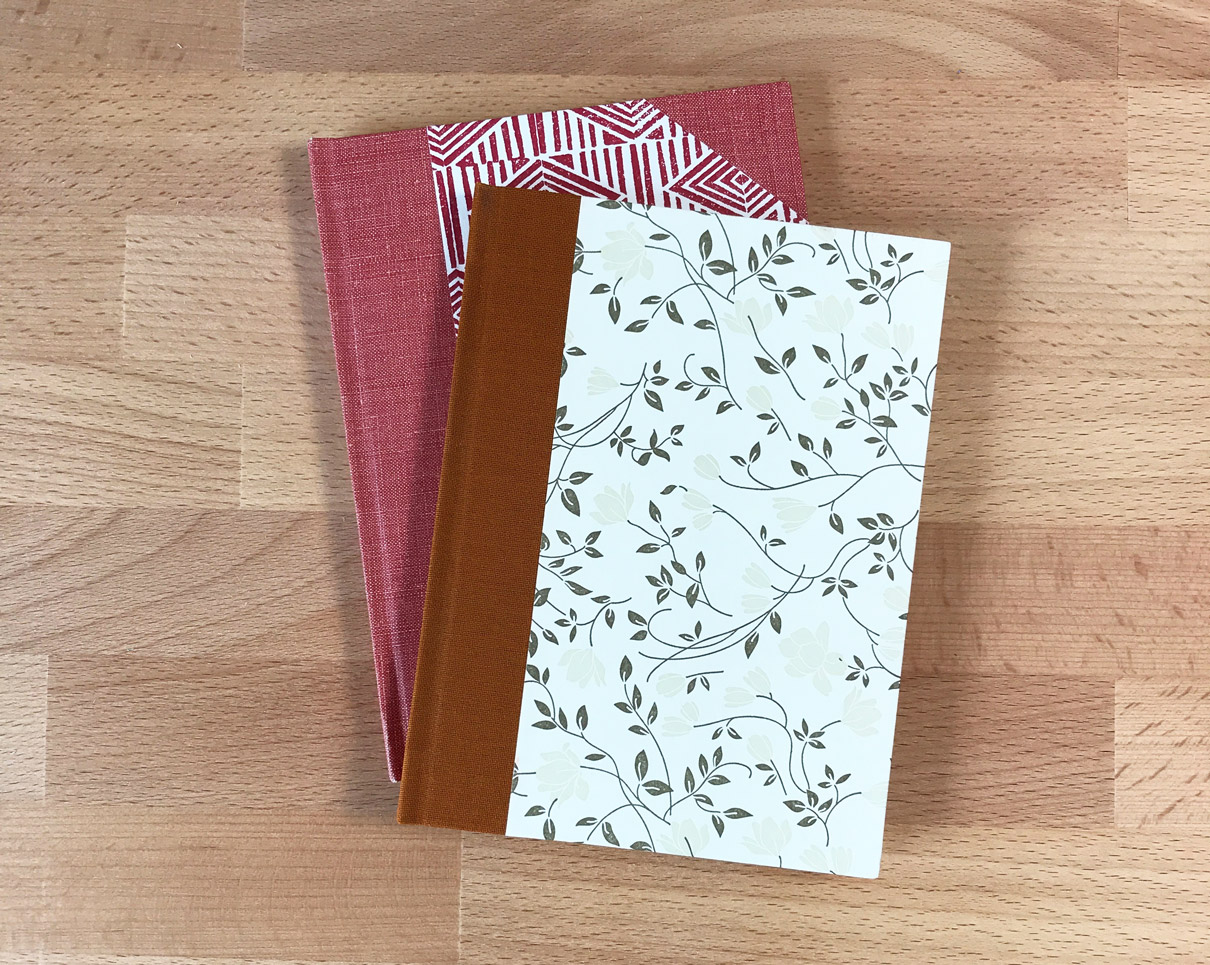
Japanese 4-Hole Binding
In-person: 1-day workshop // Online: 2 sessions (2.5 hours each)In this workshop, students will construct a common Japanese binding model, traditionally referred to as yotsume toji or 4-hole binding. We will build the model in a traditional manner, while incorporating western tools and equipment. This workshop will provide a better understanding of the structure and the foundation for which to alter the number of holes and sewing patterns.
This workshop is offered as a 1-day class (or 2 online sessions). Students will complete 3 models. The workshop can be set-up to have students make either 2 or 3 different sewing patterns for their models.
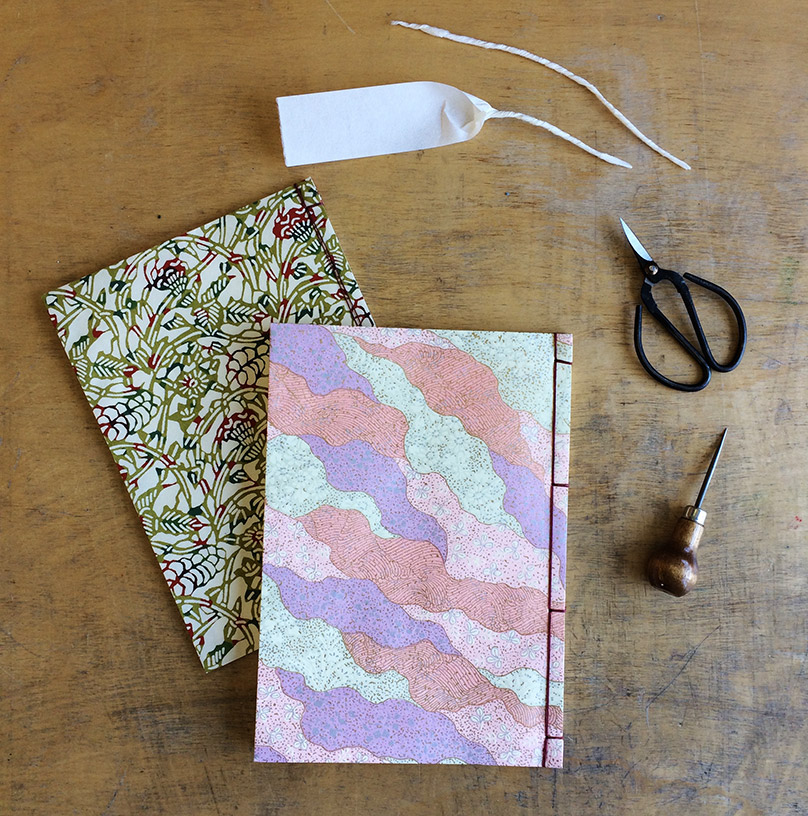
Limp Vellum and Paper Case Binding
In-person: 2-day workshop // Online: 4 sessions (2.5 hours each)With the advent of printing in the 15th century books were printed in larger quantities creating a higher demand for bookbinders. The Limp Vellum structure came about as a way for binders to quickly construct an elegant and durable binding to meet this new demand. This workshop will focus on the construction of the Limp Vellum binding structure, which is suitable for conservation or new bindings. Each student will use a sewing frame, create hand-sewn endbands and learn how to fold the vellum properly before lacing in.
This workshop is offered as a 2-day class (or 4 online sessions). Students may create their model in either vellum or handmade paper.

Millimeter Binding
In-person: 3 or 5-day workshop // Online: Offering SoonThe millimeter binding came about during World War I when leather became a scarce resource for binders. Still wanting to provide an elegant leather binding for their clients, binders would use a minimal amount of leather to cover the spine (about 1-2mm would creep onto the board from the joint). In this workshop students will be creating a Rubow-style millimeter binding, which has a small amount of leather running across the head and tail edge of the binding. The remaining part of the binding will be covered in a handmade paste paper.
This workshop is offered as a 3 or 5-day class. Many of the materials will be provided ready to assemble in the 3-day workshop. In the 5-day workshop, students will be able to make their own custom paste paper and pare leather for the binding. If a plough or guillotine is available, students will be able to decorate the head edge of the text block with graphite or gouache.

Modern Nag Hammadi
In-person: 2-day workshop // Online: 3 sessions (2.5 hours each)Students will explore how some of the earliest known codices may have been constructed. The best-known examples were discovered in a jar near the Egyptian village of Nag Hammadi in 1945. These mostly intact bindings structures date back to the 3rd or 4th century, but fragments of similar bindings date back to the 2nd century. These single signature bindings are held in their leather covers with the use knotted leather tackets. The bindings also include ties at the head, tail and fore edge to keep the binding secure. During this workshop we will be using contemporary materials to build two models of this ancient binding structures.
This workshop is offered as a 2-day class (or 3 online sessions). Students will create 2 variations of the Nag Hammadi structure - one with a limp cover and one with a semi-limp cover.
Non-Adhesive Bindings
In-person: 2-day workshop // Online: 4 sessions (2.5 hours each)The number of ways to sew a book can seem almost endless. In this workshop, students will explore just five different sewing patterns that are left exposed on the spine offering both structural support to the binding and unique decoration. Learning these sewing patterns, which stem from historical structures, will give students the foundation and knowledge to further explore other non-adhesive bindings on their own.
This workshop is offered as a 2-day class (or 4 online sessions). The length of this workshop or the number of models covered is flexible to the space or group. In the 2-day class, students will create 4 different structures covering 5 different sewing patterns. Students will work with a range of materials such as handmade paper, goatskin, vellum, decorative paper and binder’s board.
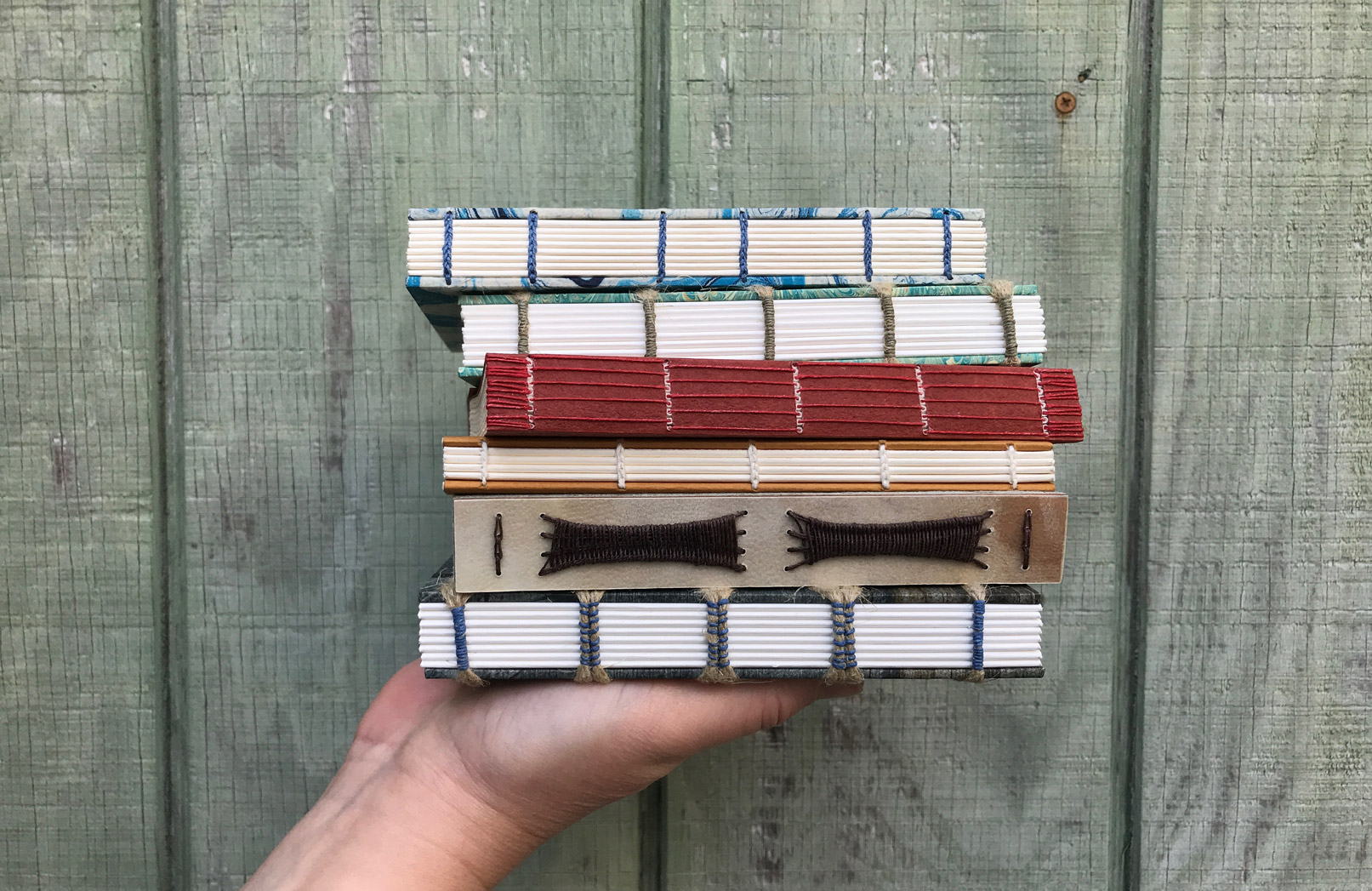
Secret Belgian Binding
In-person: 1 or 2-day workshop // Online: 2 or 4 sessions (2.5 hours each)This workshop will explore the Secret Belgian structure in both the basic and “top secret” form plus a way to modify it using Tyvek, which comes from innovations in the structure made by binder Anne Goy. The binding is simple and easy to construct; it opens flat and is perfect for thinner text blocks.
This workshop is offered as a 1 or 2-day class (or 2 or 4 online sessions). Students will create 2 variations during a 1-day class (or 2 online sessions) and 3 variations during a 2-day class (or 4 online sessions).
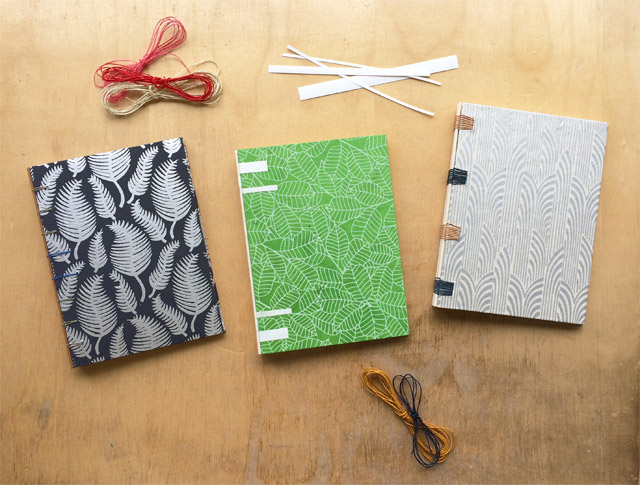
3-Part Bradel Binding
In-person: 4-day workshop // Online: Offering SoonThe 3-Part Bradel binding offers a unique aesthetic over a traditional case binding. As the name suggests, the binding is assembled in three parts, which encourages the binder to use different materials to dress the spine and covers. For this workshop, students will use leather to cover the spine and cloth or paper for the covers. Students will be guided as they pare their own leather.
Students will also be using a variety of bindery equipment such as a sewing frame, job backer and plough to complete their structure. We will also cover how to create a painted, decorative edge and stamp a custom label. These techniques may be eliminated from the workshop if equipment is not available at the venue.
This workshop is offered as a 4-day class. Experience with leather is not necessary, but encouraged.
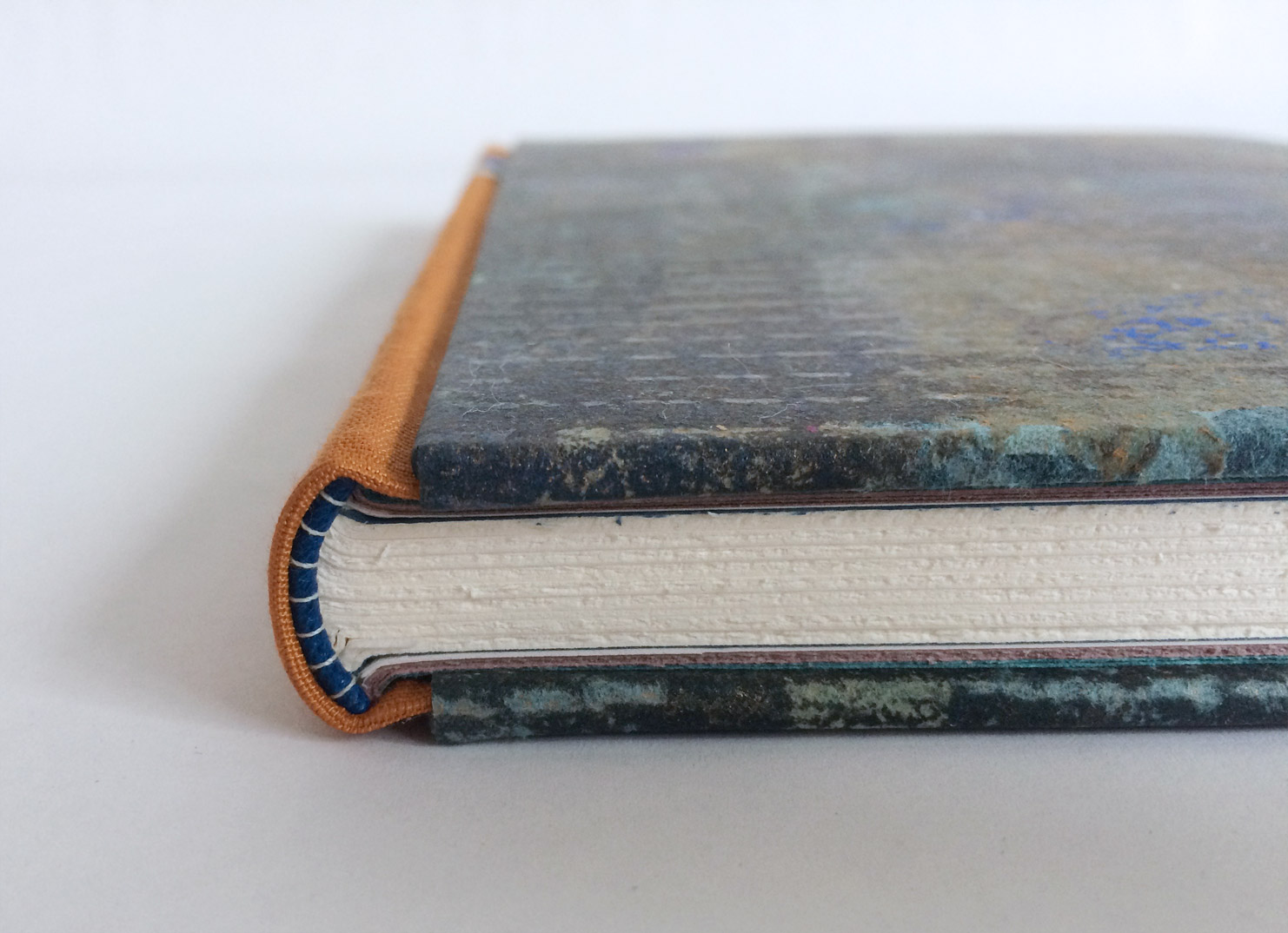
The Shrigley
In-person: 1-day workshop // Online: 2 sessions (2.5 hours each)The Shrigley is an innovative structure developed by Ben Elbel meant to house loose ephemera, postcards, photographs and more. The pages are folded into frames, allowing you to easily add or remove pieces from the book. In this workshop, students will learn the folding techniques to create the frames with various corner styles. Once the pages are assembled and sewn, students will finish their project by making a hardcover case with a ribbon tie.
This workshop is offered as a 1-day class (or 2 online sessions). Students are invited to bring their own photographs, postcards or other material for the content of their model. Online students will be provided with postcards for their model.
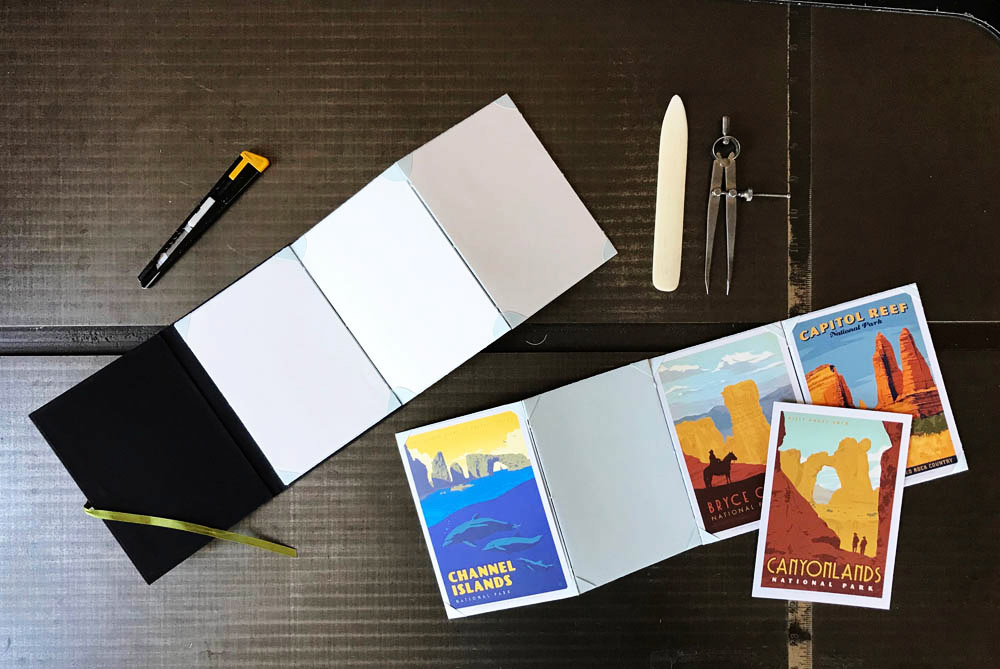
Tue-Mouche
In-person: 1-day workshop // Online: 2 sessions (2.5 hours each)Translated to “flypaper”, the Tue-Mouche was developed by Ben Elbel as a variation to the Dos Rapporté structure (another one of his innovations). The Tue-Mouche is an easy and economical form of bookbinding. The covers are constructed entirely from heavyweight paper, layered to create rigidity and strength, while the flexible spine allows the binding to open without constraints. In this workshop students will learn how to create the Tue-Mouche structure from start to finish.
This workshop is offered as a 1-day class (or 2 online sessions). Students will make 1 model of the Tue-Mouche using a heavy-weight handmade paper.
Variations of the Single Signature Binding
In-person: 5-day workshop // Online: 4 sessions (2.5 hours each)Students will explore the single signature binding through several variations of softcover and hardcover bindings. These will include adding a stub to 2 of the models to push the single signature out of the gutter, allowing the pages to lay flat. During the in-person workshop, students will make a modified Bradel binding with a leather spine. Students should have a basic understanding of bookbinding, no leather experience necessary. Online students make a similar structure without leather.
This workshop is offered as a 5-day class (or 4 online sessions). Students will make up to 14 different models in each workshop covering a range of sewing patterns and binding styles.
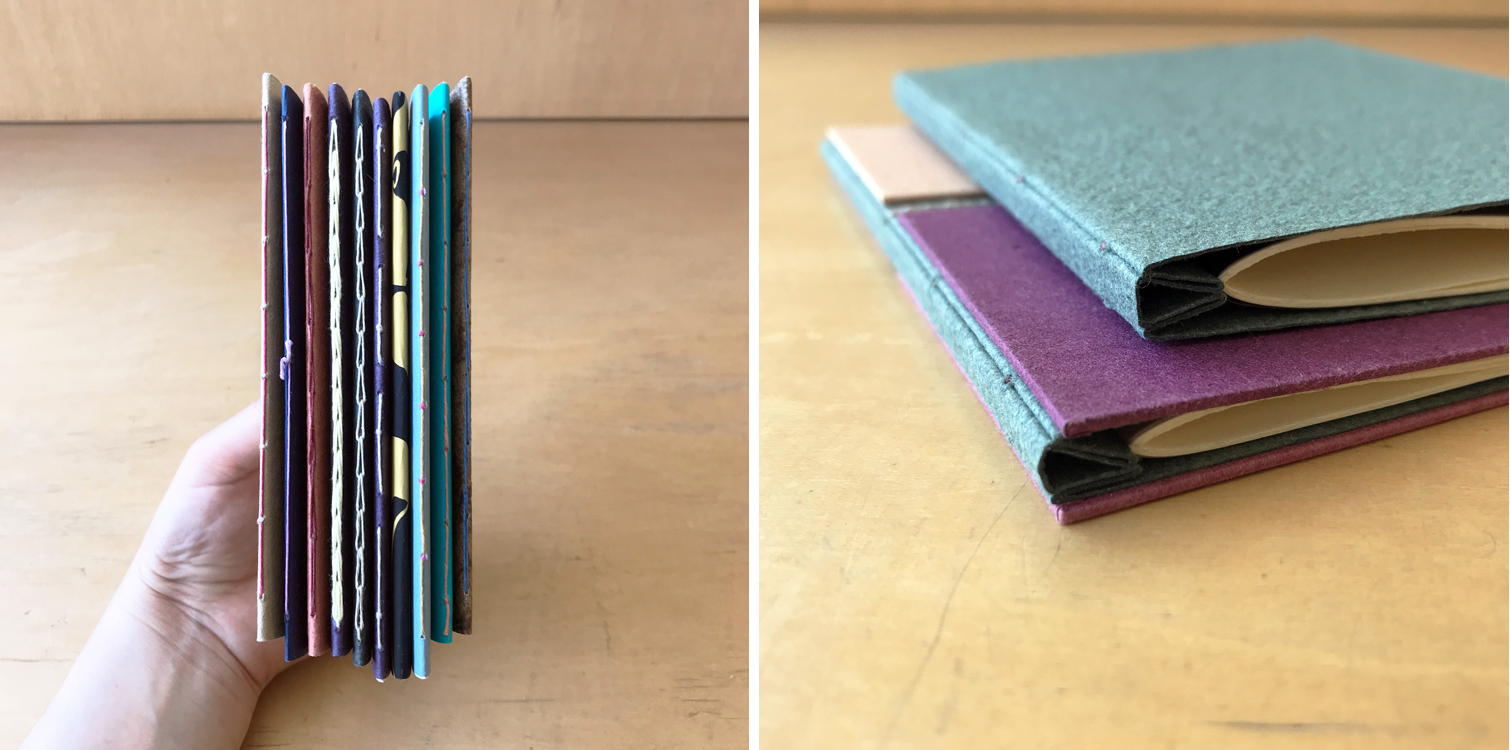
Boxmaking
Box Series
In-person: 2-day workshop // Online: 4 sessions (2.5 hours each)Boxes come in all shapes and sizes. In this workshop, students will create just three examples: French-Tray with Drop Spine, Clamshell and Japanese Box Case. Students will learn how to assemble these three styles of boxes while also discussing the ways to measure for custom box-making. This workshop will give students the foundational skills to build and modify boxes. It will also explore different ways of creating closures for boxes.
This workshop is offered as a 2-day class (or 4 online sessions). Students will make 3 different styles of boxes including 2 ways to create closures for the boxes.

Focus on Clamshell
In-person: 2-day workshop // Online: 4 sessions (2.5 hours each)A clamshell box is a common and elegant way to house and protect a binding. In this workshop students will learn how to measure and cut down materials to make two custom clamshell boxes to house books from their own library. The first box will be covered in full cloth, while the second box will have a leather spine with suede lining the inside. Each box will be finished with a printed label.
This workshop is offered as a 2-day class (or 4 online sessions). Students will make 2 clamshell boxes custom fitted to house books from their own library.
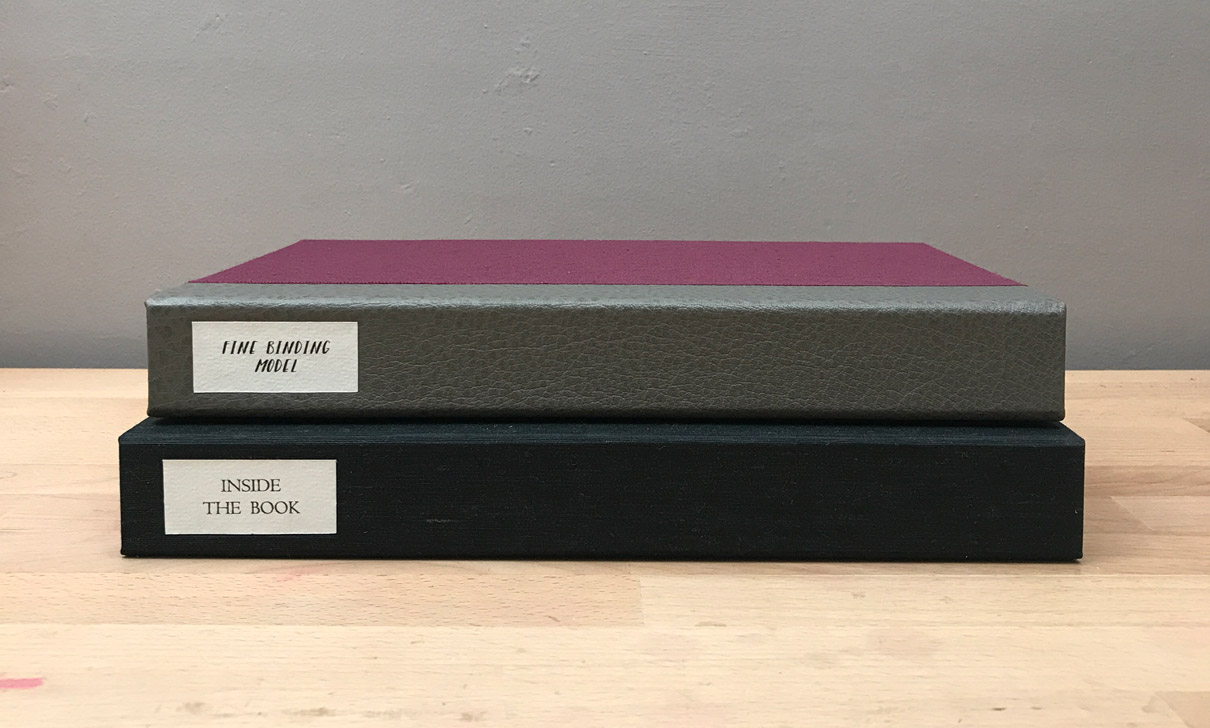
Telescoping Box
In-person: 2-day workshop // Online: 3 sessions (2.5 hours each)In contrast to the clamshell box, this style of enclosure has a completely separate lid that slides off the base. In this workshop, students will construct an inner tray set within a frame for the object to rest. A ribbon will be added for easy retrieval of the object. Students will be able to customize the inner tray to fit an object from their own library.
This workshop is offered as a 2-day class (or 3 online sessions). Students will make 1 telescoping box custom fitted to house a book from their own library. The box will be covered with handmade paper and bookcloth.
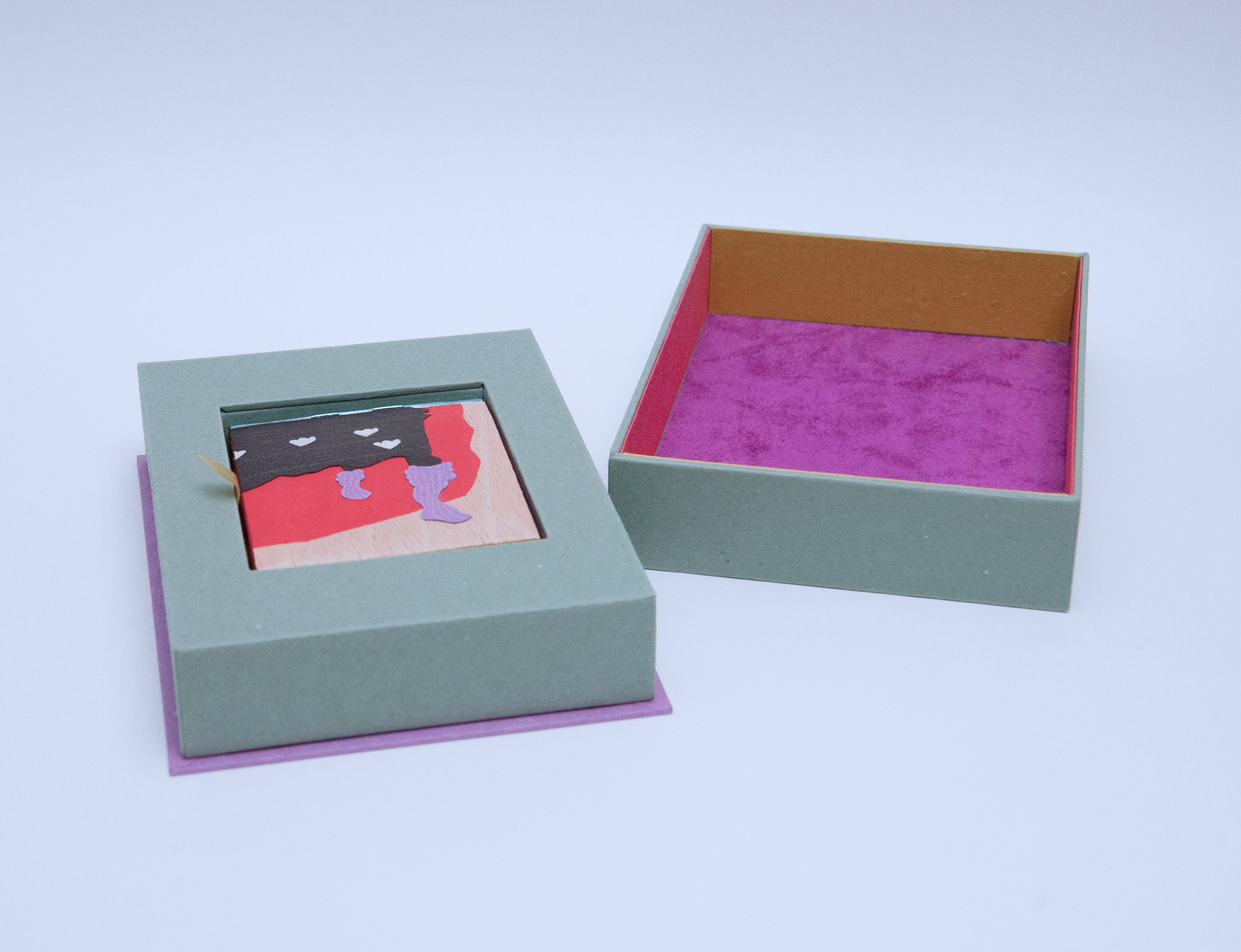
Techniques
Embroidered Leather
In-Person: 2 or 4-day workshop // Online: 6 online sessions (2 hours each)Embroidery has been used as a decorative technique on bindings since the 14th century. In Europe, particularly England, around the 15th – 17th century a great number of bindings were heavily adorned with embroidery. The substrate was typically canvas, silk or velvet. The designs fell into three distinct categories: heraldic, floral and figurative. From the 18th century onward, binders and amateur embroiderers continued using embroidery to decorate bindings for clients or personal use. Today, embroidery as a decorative technique is seeing a revival in contemporary design bindings and artist books. Many artists and binders are experimenting with embroidery on a range of materials including leather.
In this workshop, students will learn a few basic embroidery techniques that are best for decorating leather plus ways to transfer a design onto leather. In addition to these simple embroidery stitches, demonstrations will also cover ways of creating texture and depth to a design by incorporating onlays and other decorative techniques. Students will use these techniques to design and embroider a simple cover for a miniature blank book.
This workshop is offered as either a 2-day or 4-day workshop (or 6 online sessions). Students will create a miniature embroidered leather binding. The 4-day in-person and online class offers students time to create a more complex design and work in other decorative techniques. Some experience with leather and paring is necessary.

